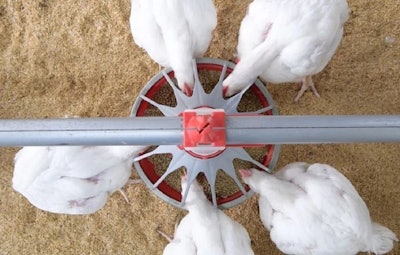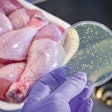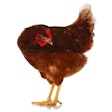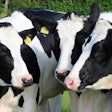
The French government has set out a five-point plan to support the national poultry industry in the coming months. This includes a vaccination program against highly pathogenic avian influenza (HPAI) for the most susceptible species, farmed ducks.
Last week, the agriculture ministry reaffirmed its support for the national poultry industry, which has been hit hard by HPAI in the past two years.
According to the latest announcement from agriculture minister Marc Fesneau, five further measures are to be introduced to the scheme compensating French producers for losses during the current season (2022-2023).
Firstly, ahead of the upcoming vaccination campaign, the number of ducks on farm will be reduced in selected areas. This covers 45 municipalities in the Pays de la Loire region, and the adjacent department of Deux-Sèvres. There, numbers of ducks being introduced will be reduced from this month. From October, all incoming ducks must already be vaccinated against HPAI. The area has around 40 breeding farms, which will be compensated for losses arising from the de-intensification of production.
Second, producers can receive compensation of up to 50% of the expected losses during the summer months. They are not required to wait for the application window to close in mid-September.
Third, the ministry will start a compensation scheme for affected breeders, slaughterhouses, and processors in the coming months. For those impacted by HPAI with operating losses of 20% or more, the scheme will cover up to 100% of those losses. This measure is subject to approval from the European Commission.
Fourth, compensation scales will be revised. For poultry slaughtered in 2022-2023, these will be calculated based in production costs during the peak season of slaughtering, which was the fourth quarter of 2022.
France’s proposed duck vaccination program
Last but not least, Minister Fesneau announced further details of the upcoming duck vaccination campaign.
Vaccination will be mandatory for all commercial duck farms in mainland France throughout the year. This covers Pekin, Barbary, and mule ducks produced for meat.
For those farms where with breeding ducks producing hatching eggs or day-old ducklings for the domestic market only, vaccination will be optional. However, for those producing either of these products for export, vaccination is prohibited. This is to avoid the disruption of the export trade.
Vaccination alone will not prevent HPAI outbreaks, the Minister stressed. Instead, it is a prevention tool that requires also compliance with biosecurity measures, surveillance to detect the first signs of any disease, and reduced stocking densities. Farms using vaccination will be required to monitor bird health, carry out regular analyses, and receive a monthly veterinary inspection.
According to this latest announcement, the agriculture ministry will bear 85% of the cost of this disease prevention program.
Two months ago, the minister announced that there would be a vaccination campaign to control HPAI in the French duck sector.
Seasonal HPAI developments in Europe
While new outbreaks of HPAI in poultry are following the previously observed diminishing season pattern, the virus continues to circulate among Europe’s seabird populations.
This is according to the latest assessment of the avian flu situation by the European Food Safety Authority (EFSA).
The risk of infection to the general public remains low, EFSA states in its latest report published with the European Centre for Disease Prevention and Control (ECDC), and the EU reference laboratory (EURL).
In recent months, HPAI has affected a wide range of wild bird species from northern Norway to the Mediterranean coast. Mainly affected have been seabirds, with infected individuals found inland as well as near the coast.
Despite the fall in poultry infections, outbreaks have been confirmed in 98 poultry flocks and more than 630 groups of wild birds in 25 European states, according to the report. Covering the period April 29 to June 23, the virus responsible has been HPAI virus A(H5N1) of the clade 2.3.4.4b. Since last autumn/fall, all cases have been linked to very closely related viruses.
Call for more surveillance, public awareness
With these developments, the groups behind the report urge national administrations in Europe to increase surveillance ahead of the start of the next HPAI “season.”
Furthermore, there is a recommendation to raise public awareness about the risks of handling dead or diseased birds and mammals.
With the aim to improve the surveillance program in Northern Ireland, a new digital system for reporting wild bird deaths has been launched in Northern Ireland. Agriculture department DAERA-NI has set up a new online form on its web site for the public to communicate the exact location of dead or diseased birds using the Global Positioning System (GPS).
DAERA says this information will give it greater accuracy on the movement of the virus, and so support its decisions on the best measures to protect poultry flocks from the disease.
According to the Chief Veterinary Officer for Northern Ireland, Dr. Robert Huey, the H5N1 HPAI virus continues to be detected widely in wild birds. Particularly affected have been breeding colonies of black-headed gulls.
This increases the likelihood of infections in domestic birds, he said.
In the Netherlands, the Dutch government has banned outdoor access for poultry in three regions of the country.
Since July 6, all poultry must be kept indoors and away from wild birds in these high-risk areas. Meanwhile, owners of other birds (including zoos) are urged to prevent their flocks coming into contact with wild species or their droppings.
HPAI infections in other animals in Europe
Recent confirmation of HPAI virus A(H5N1) infections in mammals led the authors of the EFSA-ECDC-EURL report to recommend increased surveillance of other European animals.
Most of the cases so far have been in wild carnivores that hunt wild birds or feed on dead wild birds.
The report refers to cases of 24 domestic cats and a captive lynx that have tested positive for this virus in Poland. Some of these infected animals have died.
So far, there is no clear evidence of transmission of this virus from one cat to another, or between cats and humans.
In Italy, antibodies have been found in five dogs and a cat, although they showed no symptoms. These animals came from a poultry farm where there was an HPAI outbreak.
As a result of these findings, the three groups recommend focusing the increased surveillance for HPAI on wild and free-roaming domestic carnivores in areas with a high risk of the virus presence. In addition, it suggests owners avoid their carnivorous pets coming into contact with infected mammals and birds.
Over the past two weeks, Latvia’s veterinary authority has reported that two red foxes have tested positive for the H5N1 HPAI virus. According to the official notification to the World Organisation for Animal Health (WOAH), these are the first cases of infection in the country in animals other than birds. They were found at two distant locations in the south-east of Latvia.
Since the end of last month, the same virus serotype has been detected at nine fur farms in Finland, according to WOAH reports.
Overall, 13 American mink have died out of a total population of 15,000, as well as 32 Arctic foxes out of almost 103,000. At the same premises, there were 1,500 raccoon dogs that have suffered neither morbidity nor mortality.
France, Italy, U.K. report further cases in poultry
Over the past 10 days, the French authorities have notified WOAH about two further outbreaks in commercial poultry.
Affected were a farm with 18,260 birds in the northern region of Hauts-de-France at the end of June, and another in Nouvelle-Aquitaine in the south-west starting on July 10.
Since August of last year, 401 outbreaks have occurred on poultry farms in mainland France, according to the agriculture ministry (as of July 21).
Meanwhile, Italy has recorded its 11th HPAI outbreak in poultry of 2023. Affected was a premises in the northern region of Lombardy with 400 pheasants, all of which died.
In the United Kingdom (U.K.), an earlier outbreak involving 32,000 laying hens in Banff, Scotland, has been confirmed to WOAH. Furthermore, presence of the H5N1 virus has been detected in commercial poultry in the southeast English county of Kent, according to the agriculture department, Defra. This brings the nation’s total in this population to 37 so far this year.
To WOAH, the Norwegian animal health agency has declared the HPAI situation in commercial poultry ”resolved.” This followed two outbreaks liked to the H5N1 virus serotype in October and November last year.
Veterinary agencies in Denmark and France have each notified WOAH about one HPAI outbreak in backyard flocks linked to the H5N1 virus.
For the Danes, the outbreak in 60 laying hens was the first following a two-month hiatus. The French outbreak affected a flock of 20 “non-poultry domestic birds,” according to the WOAH report. It was in the central region of Centre-Val de Loire.
Further cases in wild birds continue across Europe
Over the past 10 days, 14 European states have registered with WOAH. Covering nations from Russia to the Irish Republic, and Norway to Italy, most of the outbreaks involved sea birds, particularly gulls of various species.
The largest outbreak involved 373 gulls that died in the Murmansk region in Russia’s Northwestern federal district. At one location in western Switzerland, 45 gulls recently found dead at one location tested positive for the H5N1 virus.
Following a four-month hiatus, the H5N1 HPAI virus was detected in four seabirds found dead on the Isle of Man. This British Crown Dependency is located in the Irish Sea.
View our continuing coverage of the global avian influenza situation.

















